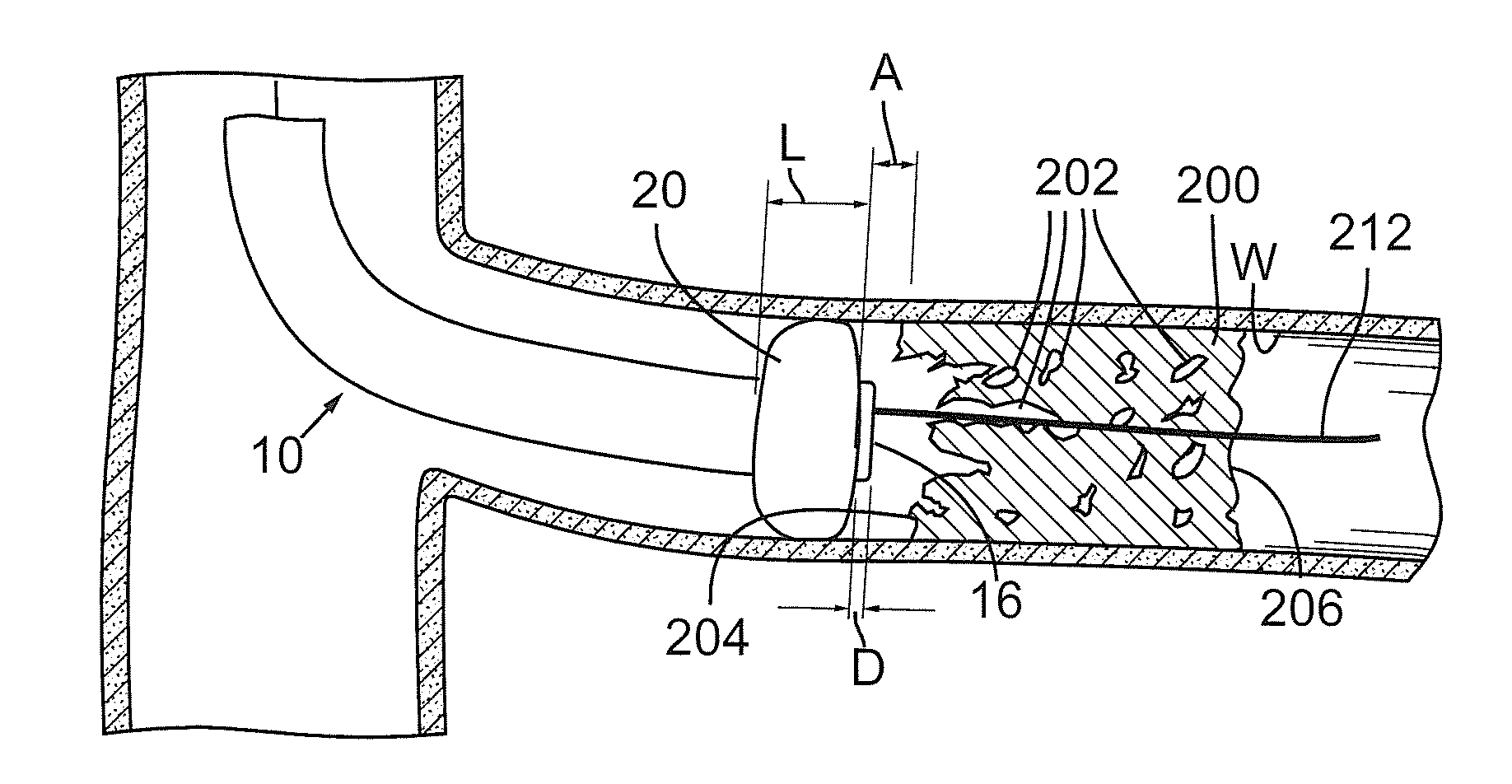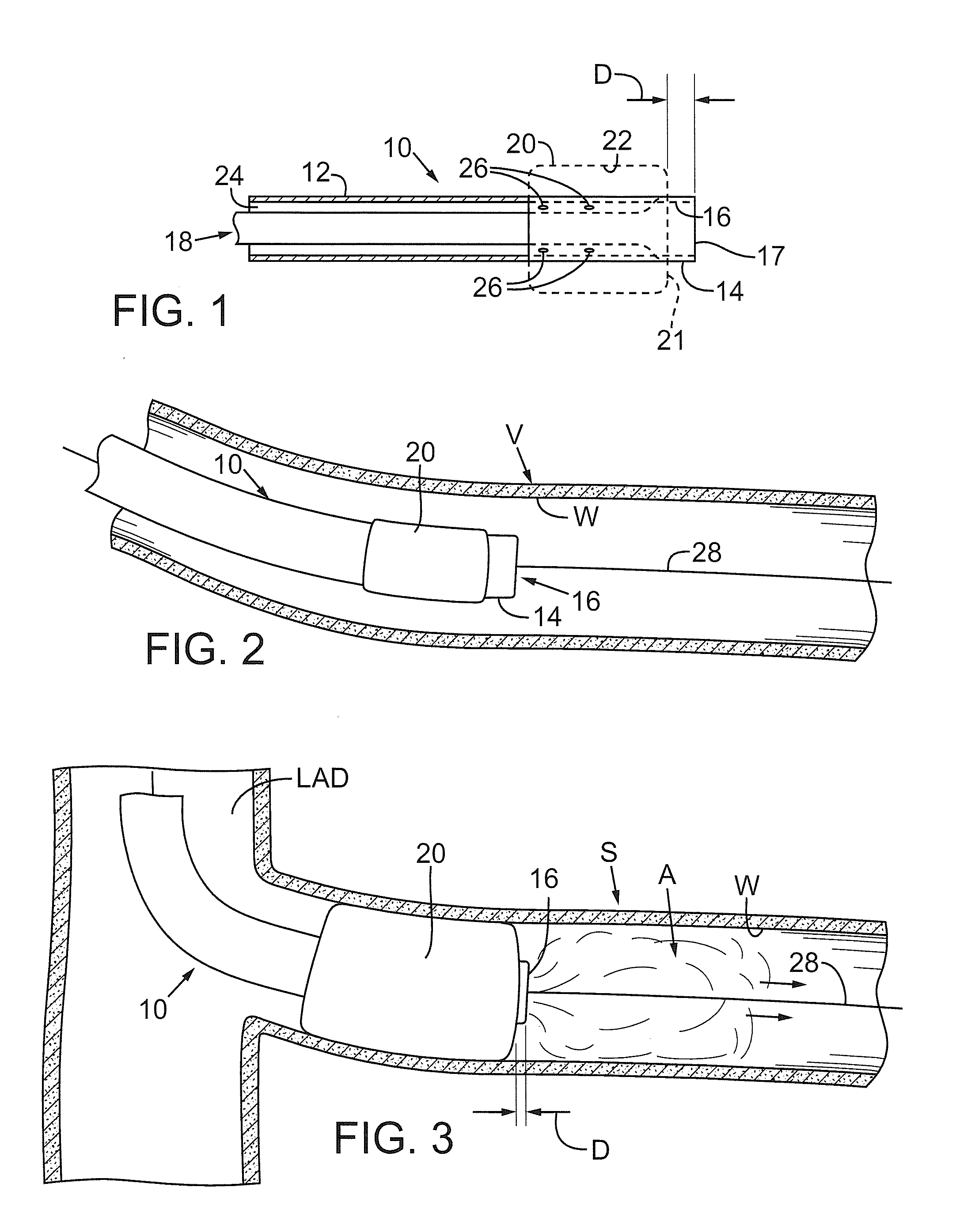Devices and methods for treating chronic total occlusion
a total occlusion and device technology, applied in the field of devices and methods for treating a condition, can solve the problems of high traumatic and risky open-heart operation, high cost of open-heart operation, and inability to be an option for those whose bodies, so as to reduce the chance of restnosis
- Summary
- Abstract
- Description
- Claims
- Application Information
AI Technical Summary
Benefits of technology
Problems solved by technology
Method used
Image
Examples
Embodiment Construction
[0029]FIG. 1 depicts a first catheter 10 that may be used with the processes and procedures disclosed herein. First catheter 10 includes a flexible, generally cylindrical length of hollow tubing 12. The tubing preferably has an outside diameter of about 1-4 mm. A distal end 14 of the first catheter has an opening or aperture 16, which is defined by an annular rim or edge 17. A first passage, shown as a first lumen 18, runs the length of catheter 10 and communicates with aperture 16. First lumen 18 preferably has an inner diameter of about 0.014-0.038 inches. The first lumen permits fluids or colloids to be selectively introduced into a vessel, as will be described below.
[0030]A first flexible membrane, shown as a first balloon 20, is secured to tubing 12 adjacent distal end 14. First balloon 20 includes a distal end 21 that is preferably positioned at a distance D from rim 17 such that distal end 21 of balloon 20 is immediately adjacent aperture 16. As can be seen in FIG. 1, distanc...
PUM
 Login to View More
Login to View More Abstract
Description
Claims
Application Information
 Login to View More
Login to View More - R&D
- Intellectual Property
- Life Sciences
- Materials
- Tech Scout
- Unparalleled Data Quality
- Higher Quality Content
- 60% Fewer Hallucinations
Browse by: Latest US Patents, China's latest patents, Technical Efficacy Thesaurus, Application Domain, Technology Topic, Popular Technical Reports.
© 2025 PatSnap. All rights reserved.Legal|Privacy policy|Modern Slavery Act Transparency Statement|Sitemap|About US| Contact US: help@patsnap.com



